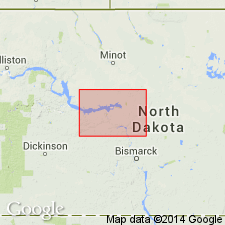
- Usage in publication:
-
- Lostwood drift
- Modifications:
-
- Named
- Dominant lithology:
-
- Till
- Gravel
- AAPG geologic province:
-
- Williston basin
Summary:
Named as an informal "inferential" (rather than lithostratigraphic) unit of the Coleharbor Formation (new) for Lostwood Lake, Mountrail Co, ND, Williston basin. In ND most named drift units are generally indistinguishable on a regional scale though they can be related to a particular event in the history of a glacier. As drift units are recognized mainly on the basis of their inferred geologic history or origin, they are highly interpretive. All drift units in ND are included within the Coleharbor. Lostwood occurs over northern and eastern parts of McLean Co, ND. Consists of gravel and silty to sandy till that is slightly cohesive with abundant lignite chips. Averages 33 ft thick in western McLean Co though it is generally difficult to determine thickness as unit is lithologically indistinguishable from underlying older drifts. Lostwood is youngest glacial drift in McLean Co; presumably Lostwood overlies Napoleon drift (revised) of Coleharbor. Equivalent to Blue Mountain drift of western McLean and southwest Ward Cos. Late Wisconsinan (Pleistocene) age based on radiocarbon dates on materials from Lostwood ranging from 9000-11,070 B.P., but dates are from landforms deposited by stagnant ice. Dates on materials from drift equivalent to Lostwood in SD range from 12,050-12,760 B.P.
Source: GNU records (USGS DDS-6; Denver GNULEX).
For more information, please contact Nancy Stamm, Geologic Names Committee Secretary.
Asterisk (*) indicates published by U.S. Geological Survey authors.
"No current usage" (†) implies that a name has been abandoned or has fallen into disuse. Former usage and, if known, replacement name given in parentheses ( ).
Slash (/) indicates name conflicts with nomenclatural guidelines (CSN, 1933; ACSN, 1961, 1970; NACSN, 1983, 2005, 2021). May be explained within brackets ([ ]).

